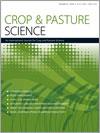Intercropping of maize (Zea mays L.) with perennial forage, such as palisade grass [Brachiaria brizantha (Hochst. ex A. Rich) Stapf], provides large amounts of biomass that can be used as straw for no-tillage systems or as pasture for animal grazing. In addition, the use of narrow row spacing may increase maize grain yield. However, it is important to evaluate intercrops at different row spacing to avoid reductions in both maize and forage biomass production. The objectives of this field experiment during two growing seasons in Brazil were as follows: (1) to evaluate the influence of intercropping and row spacing on maize yield, leaf nutrient concentration, and plant population and development; and (2) to assess the influence of row spacing on palisade grass herbage mass and leaf nutrient concentration. The experimental design was a randomised complete block design in a 2 × 2 factorial scheme, with eight replications. The treatments comprised two row spacing distances (0.45 and 0.90 m) and two crop management types (maize monoculture and intercropped with palisade grass). The nutrient concentrations in the leaves of the maize plants were in the ideal range for this crop under all conditions studied. Plant height, height of first ear, and number of grains per ear were higher with the narrow row spacing. Maize grain yield was similar in both crop management types (10 301 and 9745 kg ha–1 for monoculture maize and intercropped, respectively). However, maize grain yield at the narrow row spacing was higher than that obtained with the wide row spacing (9948 v. 8905 kg ha–1). In contrast, row spacing did not affect the nutrient level or quality (crude protein concentration) of palisade grass. The amount of dry matter (DM) from palisade grass was lower at maize harvesting (4.7 Mg ha–1) and 90 days after harvesting (6.9 Mg ha–1) under narrow spacing. However, the amount of DM was similar at both row spacings at 120 days after maize harvesting (9.2 Mg ha–1). When there is no problem with water and nutrient availability, the use of maize and palisade grass intercropping under both row spacing conditions (0.45 and 0.90 m) provides an option for the production of forage DM without reducing the maize grain yield.
How to translate text using browser tools
4 March 2013
Effects of row spacing and intercrop on maize grain yield and forage production of palisade grass
Émerson Borghi,
Carlos Alexandre Costa Crusciol,
Adriano Stephan Nascente,
Gustavo Pavan Mateus,
Priscila Oliveira Martins,
Ciniro Costa
ACCESS THE FULL ARTICLE

Crop and Pasture Science
Vol. 63 • No. 11–12
March 2013
Vol. 63 • No. 11–12
March 2013
corn
crop–livestock integration
grass
leaf nutrient concentration
sustainable Agriculture




